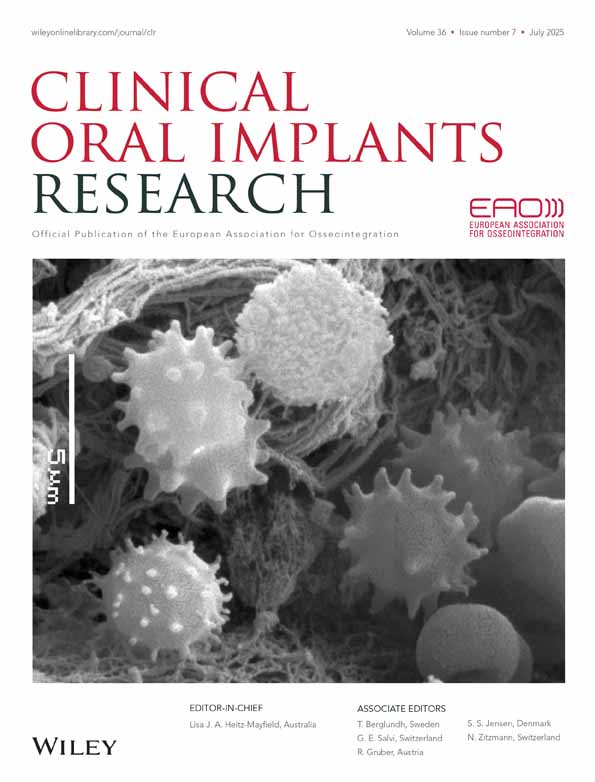Inhibition of cyclooxygenase by indomethacin modulates osteoblast response to titanium surface roughness in a time-dependent manner
Abstract
Abstract: Prostaglandin E2 (PGE2) and transforming growth factor-beta1 (TGF-β1) production are increased in cultures of osteoblasts grown on rough surfaces and prostaglandins are involved in osteoblast response to surface roughness. In the present study, we examined the effect of inhibiting cyclooxygenase on this response. MG63 osteoblast-like cells were cultured on cpTi disks with Ra values of 0.60 μm (PT), 3.97 μm (SLA), and 5.21 μm (TPS) in the presence or absence of 10−7 M indomethacin. Treatment was begun on days 1, 2, 3, or 4 after seeding, and all cultures were harvested on day 5. Indomethacin decreased PGE2 release by the cells to less than 50% of basal levels when the cells were cultured on plastic. Cell number decreased with increasing surface roughness and indomethacin treatment abrogated the surface roughness effect over time. Alkaline phosphatase specific activity (ALP) increased with surface roughness; after one day with indomethacin, ALP was decreased on smooth surfaces, but increased on rough surfaces. Over time, ALP decreased on all surfaces examined and remained greater than plastic only in cultures on TPS. Indomethacin also caused a time-dependent decrease in osteocalcin production on rough surfaces, eventually abrogating the increases due to surface roughness, but had no effect on osteocalcin production on smooth surfaces. TGF-β1 levels in the cell layer and media were sensitive to surface roughness; on rougher surfaces, TGF-β1 shifted from the media to the matrix. Indomethacin reduced TGF-β1 levels over time, but the surface roughness effect was still evident at 4 days. This indicates that prostaglandin production mediates the effects of surface roughness, since indomethacin causes a time-dependent abrogation of the response, but has no effect on proliferation, osteocalcin release, or TGF-β1 levels on smooth surfaces. Indomethacin’s effect was not immediate, suggesting that clinical protocols could be designed that would reduce inflammation without preventing osteoblastic differentiation. The effect of indomethacin was not complete, since TGF-β1 and ALP remained elevated on rough surfaces, suggesting that pathways or factors other than prostanoids are involved. TGF-β1 is preferentially stored in the matrix, acting on the cells through autocrine signaling, and may contribute to ALP even in the presence of indomethacin. These results demonstrate the importance of local factors in the autocrine regulation of osteogenesis and the potential for factors released in response to surface morphology to act in a paracrine manner.




